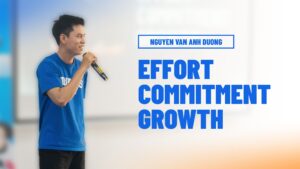Top non-tech professionals that can help in app development
22/02/2024
552
Table of Contents
When you examine the composition of many app development teams, you will usually find some team members who aren’t necessarily developers, testers, engineers, data scientists, or practicing in any other technical capacity related to IT and software development.
Sometimes, they go unseen since they are brought in temporarily for brief consultations rather than being permanent core team members. However, these people often offer insights that are pivotal to an app’s success, so let’s list the top non-tech professionals who can help in app development.
Behavioral psychologist
A behavioral psychologist studies the relationships between a person’s sensory abilities, emotions, and behavior. They also develop methods to change a person’s behavior, especially when exposed to specific stimuli or in particular surroundings.
Such a person can examine various aspects of your UI and UX, like button placements, transitions and animations, and point out possible results that may have been overlooked. For example, they can tell you whether a user will stay on a page for too long because they can’t find the desired function button or because they found it but are staring at other elements.
A behavioral psychologist can also guide you on how to use images, colors, sounds, and text in a combination that heightens the user’s positivity. For instance, should a success message be strictly a pop-up picture or accompanied by a happy chime and a vibration?
With the advent of usability testing tools that record entire sessions, a behavioral psychologist has a good starting point in that they can analyze patterns to affirm or disprove assumptions and predictions.
Lawyer
In almost any business, it helps to have someone who can offer counsel on staying within the law when offering products and services. But in app development, you may need a more diverse team of lawyers to address different subjects.
For example, there are issues with copyright and the use of intellectual property, which can range from the look and feel of an app to the underlying back-end techniques used to deliver certain functionality.

Source: Unsplash
Additionally, there’s the issue of data privacy and security. Even when you’re not unlawfully using customers’ data, your app’s architecture could have vulnerabilities that put this data at risk. Accordingly, you need a lawyer who can sufficiently interpret all details in the applicable laws and let you know how you could end up liable.
They can translate this language for the developers and architects so that when coding and combining several modules, they don’t do it in a way that may contravene the law.
Medical doctor
Recently, we’ve seen the rise of features like dark mode and eye care. These are in response to concerns that cover most app types, such as prolonged exposure to blue light and its effects on sleep, photosensitivity amongst users, possible ear damage from app audio signals, etc.
To fully understand how decibel levels or brightness affect users, you should consult different kinds of doctors like ophthalmologists and otolaryngologists. This way, you can design eye care filters accurately and install appropriate warnings regarding high sound volume.

Source: Unsplash
Additionally, there are cases where an app leans towards health, such as nutrition apps, diagnosis and consultancy apps, smartwatch apps and more. Here, you’d definitely need massive input from people in fields like cardiology.
Financial analyst
A financial analyst can scrutinize data and devise ways to make an investment more profitable or create new income streams. Typically, when engineers and designers are working on an app, they may be more concerned about how to make the app solve the user’s problem better.
However, there are other concerns, like the rate at which the team may be burning through money compared to the rate at which they raise funds. Such issues can lead to a project’s premature collapse if not adequately addressed.

Source: Unsplash
A financial analyst can advise on moves like creating tiered subscription plans, renting out application modules in a SaaS model, monetizing developer access to APIs, selling advertisement space and more. They can also help in pursuing strategic partnerships that could increase inbound traffic and institutional-grade clients with bespoke requests.
Human resources manager
In this era of remote and hybrid work, it can be tricky to maintain cohesion between team members scattered geographically and performing roles that may not massively intersect. But to develop amazing apps, you need the utmost trust within your team so everyone can voice their opinions on what they like or don’t like.
To achieve this openness and fluidity of ideas, you need someone in charge of team building and bonding. With the right human resources manager, you can significantly reduce instances of hiring the wrong people, build a welcoming culture and boost collaboration.
They can also help improve the relationship between technical staff and senior management, especially regarding communication about project requirements.
Tips for selecting and utilizing non-technical staff
Several non-technical skills could come in handy during app development, so before you decide who to bring on, here are a few tips to follow:
- Start by considering your app’s category (health, gaming, social/messaging, finance, etc.).
- Identify the point in the development journey when input will be needed. This also includes determining whether their contributions entitle them to greater rights and benefits.
- Pinpoint the technical staff they’ll liaise with and have them prepare the questions they want answered. This is also the point where you organize the meetings.
Wrapping Up
Most app development projects require a good number of non-technical team members (marketing officers, operational heads, project managers and more). Sometimes, the project may even be started by a non-technical founder.
Ultimately, it’s crucial to determine how much creative influence the non-technical personnel will have on the actual product or if they’ll be offering more administrative assistance.
At SupremeTech, we are known for building from scratch instead of simply sending out people to work. This gives us tremendous expertise in combining technical and non-technical roles in app development, so if you need assistance in this area, contact us for a free consultation.
Related Blog





















